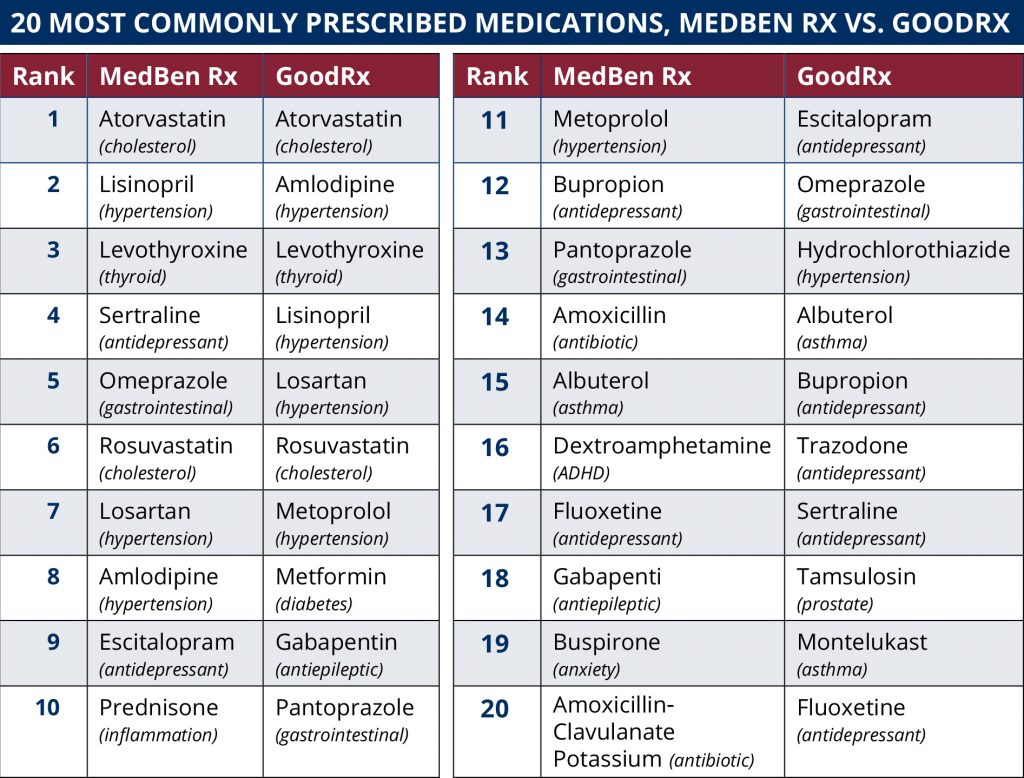A recent GoodRx list of the 20 most prescribed medications prompted MedBen Rx to take a closer look at how our own top prescriptions compare. Because GoodRx’s rankings largely reflect individuals who pay for medications out of pocket – rather than through employer-provided coverage – the comparison offers an interesting look at how access and plan design can shape prescription use.
Here’s what stood out:
Shared focus on chronic conditions. Both lists are led by long-term maintenance drugs for cholesterol (atorvastatin), blood pressure (lisinopril/amlodipine), and thyroid management (levothyroxine). These treatments remain essential for large segments of the population, insured or not.
Greater mental health utilization among employer-covered members. While both groups show antidepressant use, MedBen Rx members also show higher use of mental health medications for ADHD and anxiety. Broader behavioral health coverage and lower copays likely make these treatments more accessible.
More acute and specialized therapies under employer plans. MedBen Rx’s list includes antibiotics and anti-inflammatories – drugs less common on the GoodRx list. These are often higher-cost or short-term prescriptions that members may be less likely to purchase out of pocket.
Affordability drives choices for cash-paying patients. GoodRx’s rankings lean toward low-cost generics such as metformin and hydrochlorothiazide, suggesting that when individuals pay full price, cost often determines what they fill.
Together, these findings show how self-funded pharmacy coverage expands access to a wider range of medications – supporting both chronic care and short-term treatment needs. If you’d like to learn more about your group’s prescription trends or explore ways to enhance pharmacy value for your members, contact your MedBen Rx Account Management team.

